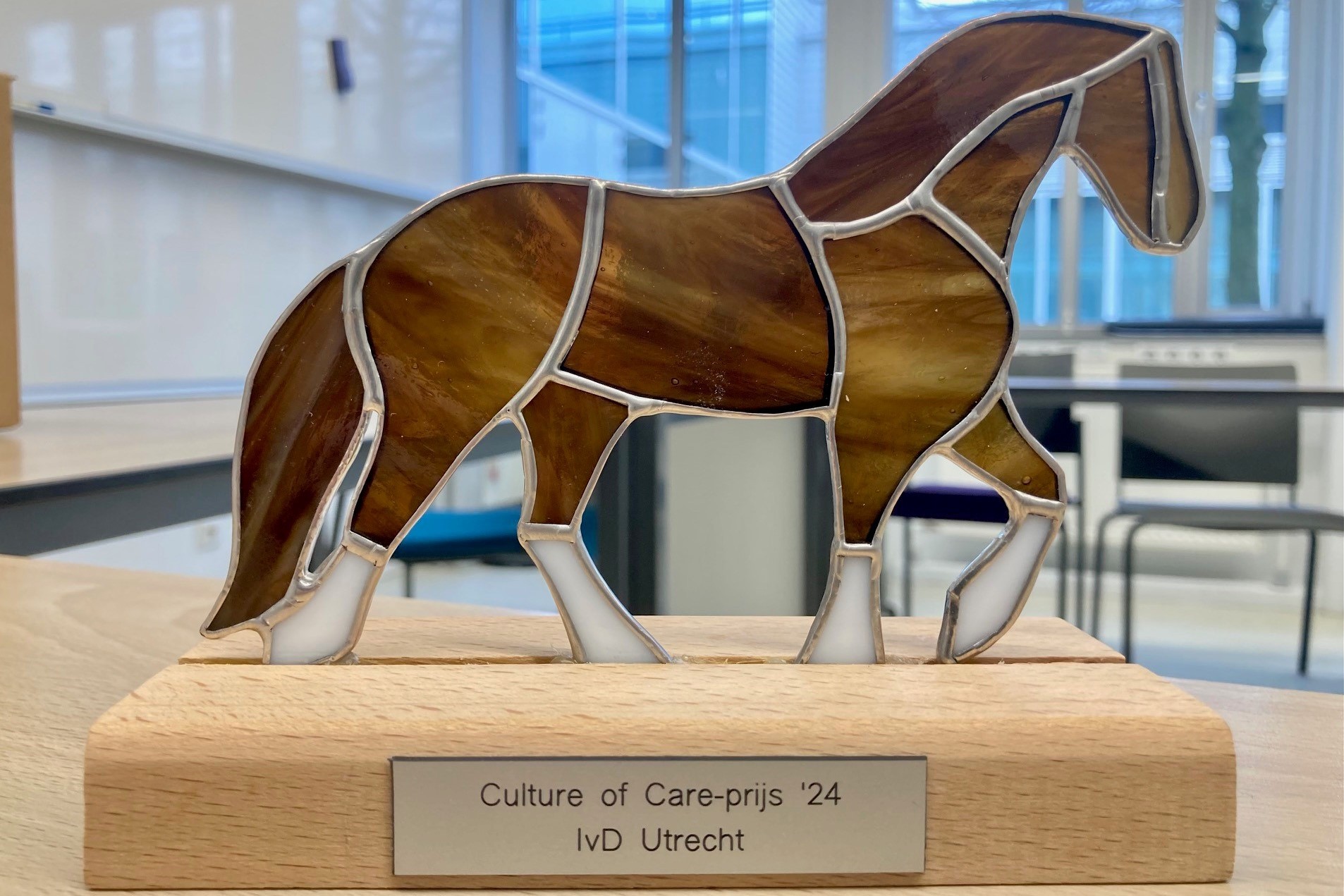Kim van der Waaij winner Culture of Care Prize
1 year agoDuring the International Laboratory Animal Technician Week from 29 January to 2 February, we awarded the Culture of Care Prize for the third time. The lucky winner was Kim van der Waaij.
Kim is a veterinary technician at Utrecht University’s equine clinic, within the Department of Clinical Sciences. According to the jury, Kim plays a crucial role in propagating the right culture when it comes to animal experiments and laboratory animals. 'She not only keeps a close eye on the welfare of the test horses, but also coordinates all the administration about this and forms the link between the shop floor, the test animal coordinator and the researchers.' Kim was presented with the trophy by Ivo Tiebosch of the Animal Welfare Body.
Robin van den Boom, laboratory animal coordinator at the Department Horse said this about Kim in his nomination, among other things:
'Kim is a veterinary technician at Utrecht University’s equine clinic, and plays a crucial role in conveying the right culture when it comes to animal experiments and laboratory animals. It is still occasionally difficult for us, as staff of an (animal) hospital, to realise that we need to treat horses that 'work' for us as laboratory animals a little differently from horses that come to our clinic as patients. Kim is one of the people who keeps a close eye on that distinction. Responsibility for requesting animal experiments obviously lies with the responsible researchers (and possibly teachers) and the laboratory animal coordinator, but we depend on Kim for implementation. Before a working protocol (where our horses will be used) is approved, Kim is also consulted, and she gives her input and thinks along with the feasibility. We have a (somewhat limited) number of experimental animals and Kim keeps an overview of which horse is used when and for what. Researchers also need to coordinate with her if and when their (approved) research can take place, and Kim ensures that all rest and times are observed.
'We obviously have to not only use the horses appropriately for animal testing but also keep meticulous records of what they have been used for, how it was done and how the animals are doing (their welfare). Kim collects all these records. Currently, there are several systems and checklists to record the horses' (daily) welfare, use for animal testing or education and movement, and Kim brings it all together. Naturally, she also thinks about how this administration can be simplified and more centralised. Kim also encourages her colleagues (animal caretakers and researchers) to fill in/update the records in a timely manner, and if she has questions about an animal experiment, she asks the researcher(s).'
'Since Kim is present in the clinic (almost) daily, she herself also has insight into how the horses are doing and can take this into account when assigning them for examination or teaching. Furthermore, there is now also a WhatsApp group for reporting details concerning the horses. Kim is also in close contact with the Solleysel, the equestrian association that also uses the horses. In this sense, Kim often forms the link between the shop floor and the laboratory animal coordinator. Furthermore, several times a year Kim takes the initiative to discuss with all stakeholders, including (if necessary) colleagues from the IvD, how the test horses are doing, and if/how they could possibly be improved.'


